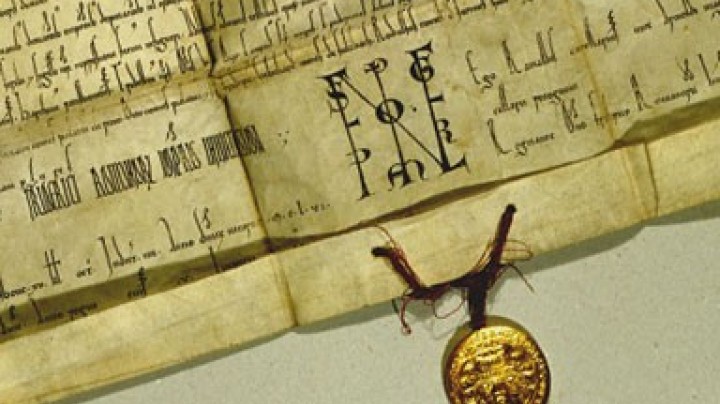Leopold III: the tragic end of an ambitious attempt at expansion
Leopold systematically consolidated his rule over his territories. In his attempt to extend Habsburg sovereign rights in the dynasty’s ancestral lands he entered into a fatal conflict with the Swiss Confederacy.
Duke Leopold acquired numerous territories and sovereign rights, among others over the County of Feldkirch, the heartland of what would later become Vorarlberg. The acquisition of the city of Trieste in 1382, which voluntarily placed itself under Leopold’s protection in order to avoid the oppressive hegemony of Venice, was of prime importance: the Habsburgs now had access to the sea for the first time.
The duke also concentrated his activities on Swabia, where he attempted to round off the ancestral possessions of his dynasty. In the sovereign domains in the south-west of the Holy Roman Empire that had become fragmented after the extinction of the Hohenstaufen dynasty Leopold saw an opportunity to create a homogeneous territory under Habsburg rule. In doing so he came into conflict with the nascent Swiss Confederacy. Leopold’s stubbornly pursued policy of acquisitions in Swabia also provoked the founding of the anti-Habsburg League of Constance by a number of Swabian, Rhenish and Franconian cities to support the cities of Zurich, Bern, Solothurn and Zug, which he was threatening.
Leopold’s resolute policy of expansion inflamed what was already a conflict-laden situation. Shortly before the death of Rudolf I in 1291 the cantons of Uri, Schwyz and Unterwalden had concluded the Eternal League, intended to protect their freedoms against the rising Habsburg dynasty's lust for power. From this developed the Swiss Confederacy. It marked the start of a conflict with the Habsburgs that was to last for two centuries. In 1474 the dynasty was forced to acknowledge the ultimate loss of their ancestral lands.
Leopold launched a comprehensive policy of alliances. He found allies in the feudal overlords of the region who saw their rights threatened by the Swiss defensive alliance but also by the rising dukes of Burgundy, who also wanted to extend their position in the territories of the Middle Rhine. In order to reinforce this alliance he arranged a marriage between his second-born son, also called Leopold, and Catherine, daughter of Duke Philip of Burgundy.
Leopold started a military campaign in 1386, leading his army, which was superior in numbers, against the Swiss hordes, who though poorly armed were more mobile in this difficult terrain and far more resolute. The duke was spectacularly defeated in the Battle of Sempach on 9 July 1386, when the Swiss peasant army routed the professional army of knights. Duke Leopold III fell in battle.
His corpse was interred in the abbey at Königsfelden which had been founded to commemorate Albrecht I’s assassination. This monastery came to house the remains of two forceful protagonists from the House of Habsburg whose ambitions were ended by a violent death.
After the dissolution of the monastery Leopold’s mortal remains were transferred first to St Blaise in the Swabian Forelands in 1770 and then in 1809 to the abbey of St Paul in Carinthia.















